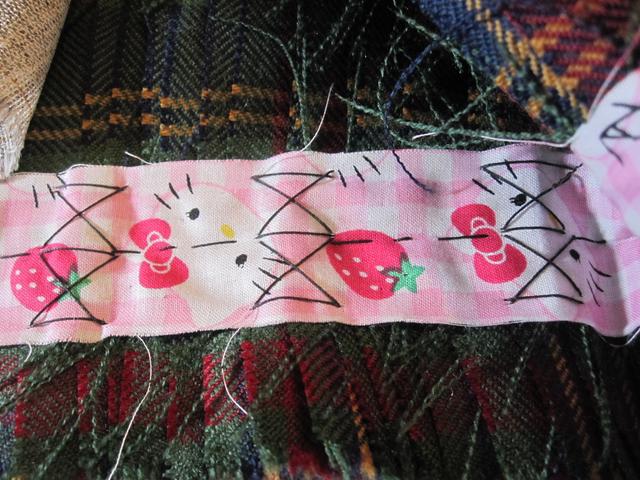
Originally Posted by
Naught

Thank you both. I’m still waiting for the book. These last few kilts needing repair are not being worn this season, so I have plenty of time to spare. It’s fascinating to see the differences in construction.
When you say “apron”, is that the interfacing/lining combo on the two front sections that wrap? Or the entire front pieces?
The lining and interfacing in my first picture doesn’t have folds, rather is cut in a curved trapezoidal shape - if that makes sense. The interfacing is sewn to the lining at the bottom edge, and is basted/stitched to the pleats and to the sides of the front linings. The black cotton had been hand-stitched along all four edges.
In Steve’s pictures (aside from a glimpse of Hello Kitty) it looks like the interfacing is sewn to a separate tartan piece. Because the top of the pleats in our kilts has been cut away, I don’t know that would work for these…. unless it were sewn down at the bottom. Edit: disregard this part. I just needed my glasses. Haha!
Can’t wait to get the book!!
Hello Naught
Apron usually refers to the outer layer of the front, unpleated part of the kilt, and usually all that goes into making it. The inner layer is usually differentiated as the under apron.
As I have to reduce the waist size of my kilts almost every year I don't make quite such an elaborate job of the lining, but I always include a stabiliser strip which is fixes along the whole of the waistline at the narrowest point.
When attaching the stabilizer I ease in the kilt 2 inches in the finished measurement - usually around 1/2 an inch on each of the aprons and 1 and 1/2 inches across the pleats so that the wool and the stitching of it is not under any strain. I started to do that when I first took one of my kilts apart and saw how the threads were distorted after about 6 months wear.
For a layer which doesn't have to hold firm I have cut the cloth on the bias, as it can then be moulded into shape using sewing and stretching techniques. Gathering at the waist edge and careful pressing with steam will usually shape lining fabric as much as required for a kilt, even for a woman's narrower waistline.
Anne the Pleater
I presume to dictate to no man what he shall eat or drink or wherewithal he shall be clothed."
-- The Hon. Stuart Ruaidri Erskine, The Kilt & How to Wear It, 1901.



















Bookmarks